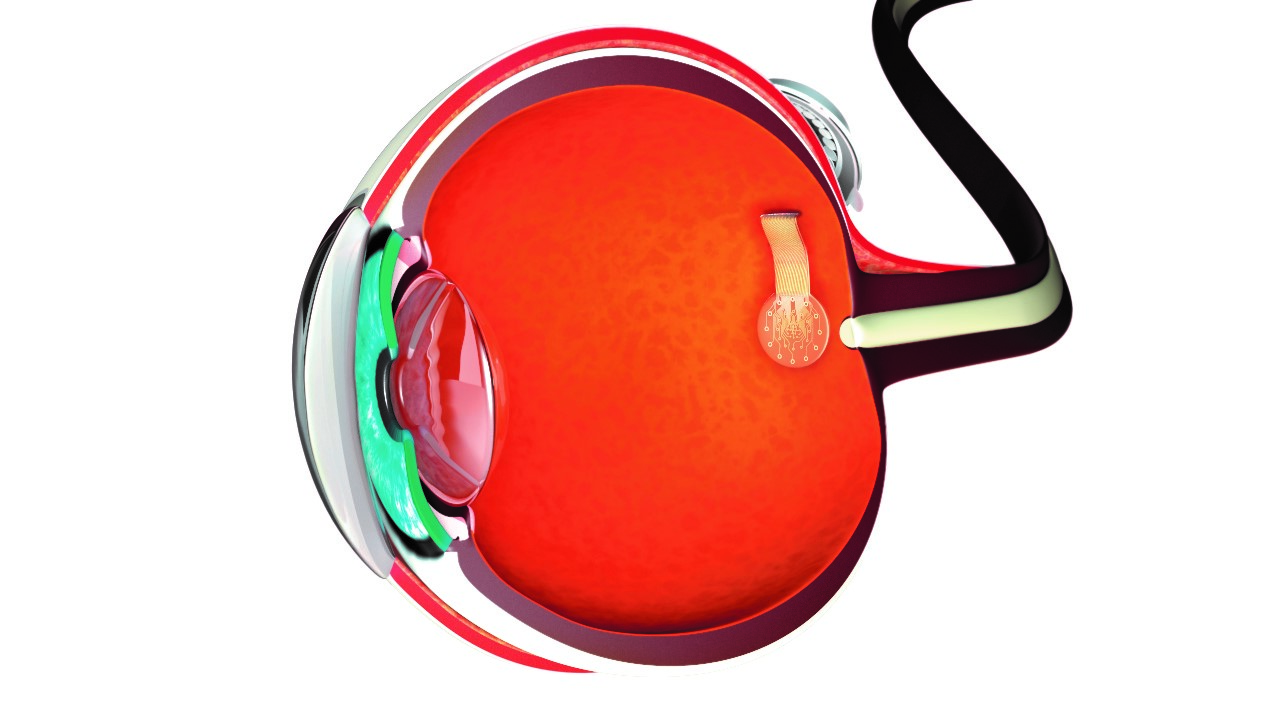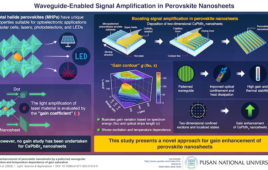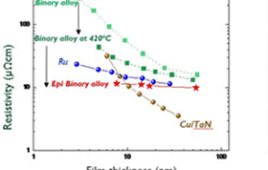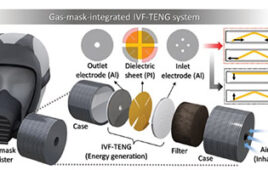
A flexible microelectrode array. Credit: ICN2
Graphene—a novel 2D material comprised of a single layer of carbon atoms—is rapidly making its way through research and development phases. It is electrically and thermally conductive, chemically stable, transparent, flexible and strong. Leveraging these attributes to improve and create new technologies is a common theme across many fields.
But how could one material be so ubiquitous? The answer is versatility. Its structure can be modified and functionalized to serve a multitude of different purposes. Furthermore, the production and modification of graphene-based materials can range from processes involving chemical vapor deposition (CVD) or bulk chemical synthesis in solution using graphitic raw materials. As the production technology improves, the material properties advance closer to their theoretical upper limits and the utility of the material expands to a wider range of applications.
Neural interface technology
One of the many potential uses of graphene is in neural interface technology. As part of the Graphene Flagship, the lab at the Catalan Institute of Nanoscience and Nanotechnology (ICN2) in Barcelona, Spain, in collaboration with the Institute of Microelectronics of Barcelona (IMB-CNM), is investigating the ability of graphene to function at the electrode-tissue interface as a recoding and stimulating electrode for application in neural prostheses— devices that restore functions lost due to neural damage.
The goal is to produce a graphene-based microelectrode technology that outperforms traditional electrodes derived from metals, such as gold, platinum, and titanium. A high performing electrode is characterized as having a large signal-to-noise ratio (SNR) during electrical recording, and a high charge injection capacity (CIC) during electrical stimulation. Electrode materials with a low electrochemical impedance generally provide a better SNR, whereas materials with a large effective surface area, and thereby a large capacitance through which charge transfer can occur, provide a higher CIC. Materials based on conductive polymers and other forms of carbon (e.g. carbon nanotubes, diamond and carbon black) have been proposed as means to improve upon the traditional metallic technology. So far they have yet to replace metal electrodes because their high performance comes at the cost of impaired electrochemical stability and biocompatibility, and vice versa. This research aims to leverage the versatility of graphene to tailor-make electrodes with competitive electrochemical properties.
Graphene form follows function
Graphene as a neural interface material can take many forms, such as single layer two-dimensional graphene, multilayer graphene, vertically-aligned graphene nanowalls, and graphene flakes. Each of these has different properties. Single layer graphene is conductive and transparent, but it has a relatively low interfacial capacitance. It is suitable for recording electrodes and can be used in optoelectronic studies that induce neural activation through light stimulation while electrically recording the neural response using the electrodes. Graphene’s transparency enables interrogation of neurons directly beneath the electrode that would otherwise be occluded by an opaque material. Multilayer graphene can offer higher conductivity and interfacial capacitance than single layer graphene, but with reduced optical transparency. Vertically-aligned graphene nanowalls consist of few-layer graphene layers oriented perpendicular to the substrate surface. They can be produced using plasma-enhanced CVD. This improves the interfacial capacitance of the material by accessing the surface area in the vertical dimension, similar to what happens for carbon nanotubes. This increased capacitance is attractive for neural stimulation electrodes. Graphene flakes can be derived from liquid phase exfoliation of bulk graphite. The random alignment of the flakes can result in a porous architecture once these are deposited to form a film, with a surface area that scales with the thickness of material. The resulting capacitance makes the printed film promising as electrode for neural recording and stimulation, although it has drawbacks, such as the reduced transparency caused by the film thickness, and the high resistance caused by the fragmented nature of the material. Each of these graphene forms can be explored to produce novel microelectrodes that interface with electrogenic neurons, and there is potential to combine the different forms with each other or with other materials in order to enhance or take advantage of a particular characteristic.

A representation of a retina implant. Credit: ICN2
Passive electrodes
For neural prostheses utilizing electrical stimulation, one of the current challenges is to reduce the size of the electrodes while maintaining stimulation that is within the safe CIC of the material. Smaller electrodes are desirable because they provide higher specificity with regard to the area of stimulation. For example, a reduced electrode size is important when designing a retinal prosthesis, which is meant to restore vision to individuals who have lost sight due to retinal diseases that cause loss of the light-sensitive neurons in the back of the eye. In this prosthesis, a camera captures an image of the outside world that is converted into a spatiotemporal pattern of electrical stimulation delivered through a microelectrode array implanted on the retina. Smaller electrodes correlate with smaller pixels that can be packed together at a high density in the array, which could translate to a higher resolution in the restored visual percept to the patient.
Each material has a fundamental CIC that, in combination with the charge necessary to activate a neuron, will determine how small the electrode can be fabricated. However, by roughening the surface of the material while maintaining the same geometric footprint, the actual CIC of the electrode can be increased. This strategy has been successfully implemented with metal electrodes. The versatility of graphene processing permits the expansion of this idea into the vertical dimension, as exemplified with graphene flakes. The porous architecture increases the surface area of the electrode volumetrically, which can lead to increased electrochemical performance and the design freedom to further reduce the size of the electrode.
Active electrodes
Further evidence of graphene’s versatility is that its electronic properties permit its implementation into a solution-gated field effect transistor (SGFET) configuration interfaced with neurons in an ionic solution. The SGFET has implicit amplification of the detected neural signal and, as such, does not require the additional amplification module present in traditional electrode recording configurations, and it can be implemented in flexible technologies. SGFETs enable stable recording of low frequency neural signals in the brain. For example, an array of SGFETs has the potential to provide information regarding the origin and progression of slow wave cortical spreading depression. This type of recording is challenging for traditional passive electrodes, because their SNR is reduced in the low frequency range (<10 Hz).
Future potential
Microelectrodes are a major component of neural interface technology. Their size, density, and electrochemical performance play a significant role in determining the efficacy of a particular neural prosthesis. Porous graphene electrodes have the potential to provide improved electrochemical CIC, while graphene-based SGFET technology is primed to offer improved performance in the low frequency recording domain. These technologies can be combined on the same flexible implant device for enhanced bi-directional communication between neurons. Additionally, other related areas of research include the combination of graphene with other electrode materials to improve performance, graphene chemical functionalization for use in molecular detection, and graphene-conjugated drug release strategies.
The versatility of graphene facilitates the implementation of various engineering design principles in order to address challenges faced by biomedical technologies. Graphene research is an interesting space to monitor, as the material properties continue to improve, begetting further technological development.
Steven Walston, PhD, is the Whitaker International Scholar at the ICN2. Jose A. Garrido, is a ICREA professor and Graphene Flagship Work Package Deputy Leader for Biomedical Technologies at ICN2. The Graphene Flagship was launched by the European Union in 2013. The overall goal of the Graphene Flagship is to take graphene and related materials from the realm of academic laboratories into European society, facilitating economic growth and creating new jobs, in the space of ten years. http://www.graphene-flagship.eu




